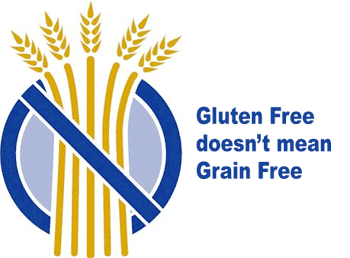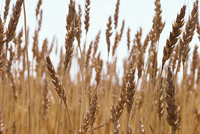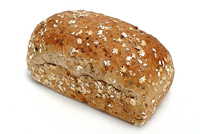Share This
We were intrigued in mid-2009 when research documented that celiac disease, an immune system reaction to gluten, has increased four-fold in the past half-century. We covered the research in an earlier blog, but the question still left on the table was, “Why has celiac disease increased so hugely?”
We set out to find the answers, by combing through scientific research, and came across some interesting information that may fill in the holes – and may give hope to the estimated 1-3% of people who cannot digest gluten properly.
A little background first, before we share our research trove with you. Research shows that celiac disease and gluten sensitivity are distinct problems, and in fact there may be two main types of Celiac Disease. Gluten is a protein that’s found in wheat, barley, rye and triticale (a wheat / rye hybrid). It’s only found in these four grains – so people who have celiac disease or are otherwise gluten-intolerant still have plenty of great choices of whole grains to enjoy. Gluten-free does not mean whole grain-free!
Our romp through the research turned up evidence that today’s wheat foods are, most likely, higher in gluten, which may account for the increased problems experienced by a small fraction of the population. The good news, though, is that we also found research that suggests ways to lower the gluten levels in wheat-based foods. We’ll organize this blog according to our good news findings. (Note: some of these ideas may also apply to barley and rye, but the research we found centers on wheat.)
Consider Ancient Grains
Different types of wheat have different numbers of chromosomes, and some studies show that the older wheats, with fewer chromosomes, tend to have lower levels of gliadins, the type of gluten proteins that seem to cause most sensitivities.
Einkorn, the oldest known type of wheat in our current food supply, has just 14 chromosomes, and is called a diploid wheat. Durum wheat (the kind most often used for pasta) and emmer are tetraploid wheats, with 28 chromosomes. Common wheat (used for most everything) and spelt have 42 chromosomes and are known as hexaploid wheats. Research shows that different tetraploid and hexaploid wheat varieties differ widely in gliadin levels, and it’s possible to select “individual genotypes with less Celiac Disease-immunogenic potential.”
Even if you’re not gluten-sensitive, you may want to consider some of the ancient grains. Research shows that Kamut has higher levels of antioxidants than some modern wheats, and that healthy plant sterols are higher in tetraploid wheats than in hexaploid wheats.
Organic May Trump Conventional Growing
We all understand that the foods we eat can make a big difference in the composition and health of our bodies. The old saying “You are what you eat” applies to plants, too.
We uncovered one intriguing study that found that varying levels of sulfur and nitrogen fertilizer can change the proteins in wheat. Different proteins, different sensitivities. Is there, perhaps, a connection between the widespread introduction of chemical fertilizers after World War II, and the four-fold increase in Celiac Disease during the same period?
The jury is still out. We’d like to see research that takes the next step, and compares the proteins in conventionally-farmed grains with organic grains.
Try the Old Ways of Making Bread
Once you’ve grown and harvested the wheat, how you make your bread may affect its gluten levels, too. Throughout most of mankind’s history, bread was made using a sourdough process based on lacto-fermentation. The process was slow, and results were uneven, so when modern yeast became available, sourdough breads became less common.
Now research shows us that lacto-fermentation of wheat has the potential to drastically reduce gluten levels. We found three studies along these lines. Our favorite study showed that sourdough bread produced with a particular strain of lacto-bacilli had gluten levels of 12 parts per million – where anything under 20 ppm is considered gluten-free. Bread made with the same wheat but without lacto-fermentation had gluten levels of 75,000 ppm.
Another cool thing about this study was that the Italian researchers lacto-fermented the flour, then dried it and used it in a conventional quick-baking process, one that could be compatible with modern bakeries. We love it when someone discovers ways to incorporate the best of the old ways into today’s realities – that’s what health through heritage is all about!
Share Your Thoughts and Your Research
I’m not a researcher – just a fascinated auto-didact – so some details of the studies cited here may have escaped me. I present the information above as speculation, and invite those doing actual research in this area to contact us with their latest findings. We’re excited by the range of research being conducted, and its potential for removing any barriers that stand in the way of all people being able to enjoy all whole grains! (Cynthia)





Comments
Pages
Add a Comment